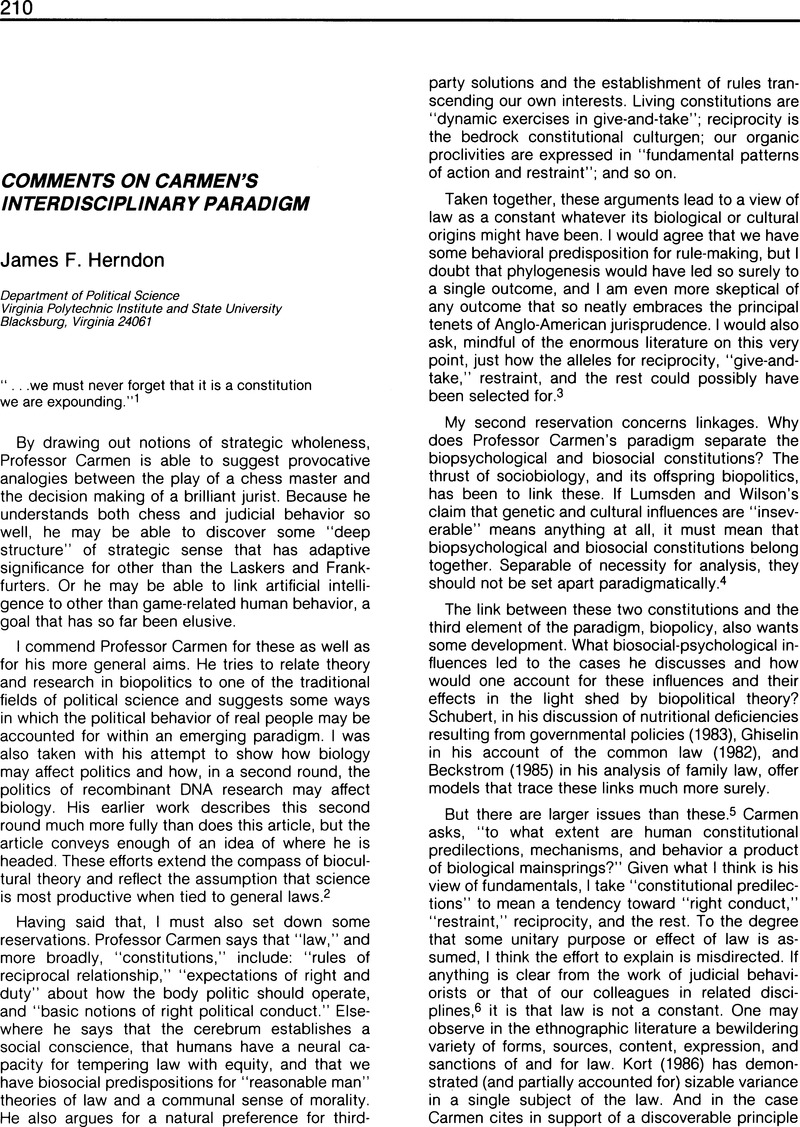Article contents
Comments on Carmen's Interdisciplinary Paradigm
Published online by Cambridge University Press: 17 May 2016
Abstract

- Type
- Articles and Commentaries
- Information
- Copyright
- Copyright © Association for Politics and the Life Sciences
References
Notes
1. John Marshall in McCulloch v. Maryland, 4 Wheaton 316, at 407; 4 L.Ed. 479, at 602.Google Scholar
2. Cf.Lopreato, , 1984, p. 25.Google Scholar
3. An extended review of these questions, as well as an earnest attempt to resolve some part of the attendant controversy, is contained inLopreato, (1984), especially chapters 5 and 6.Google Scholar
4. I followSchubert, (1982) here. He is not responsible, of course, for the use I make of his ideas.Google Scholar
5. And smaller ones, too: nothing in the literature I know supports Professor Carmen's statement that Homo sapiens sapiens inherited anything from chimpanzees. I think he is in error, too, in attributing thought about “right conduct” to hominids other than H. sapiens sapiens: australopithecines such as Donald Johanson's “Lucy” are not likely to have had mental prowess significantly beyond that of today's great apes (Johanson and Edey, 1981); because Carmen expressly avoids interspecific arguments based on homologies, he might confine his theories to H. sapiens sapiens and avoid inevitably problematic inclusion of other hominids. In another place, Carmen says that “chemical reactions [are] genetic in foundation.” I would like to know what that means. I thought it was the other way around.Google Scholar
6. See, for example, Perelman, (1984) and Hoebel, E. A.(1982).Google Scholar
7. And, of course, it is. SeeGreen, and Kitchen, (1986) for a recent review of the literature and some necessary qualifications. See alsoGrowdon, and Wurtman, (1979) for other qualifications emerging from considerations of dietary deficiencies. Stone (1983) also offers reservations.Google Scholar
8. I am nonplussed by Carmen's omission of any reference to overarching social theory of the kind developed by those cited as well as by many others. It seems to me that his paradigm must include some delineation of the mechanics of linkage and interaction of the three systems he proposes.Google Scholar
- 1
- Cited by


